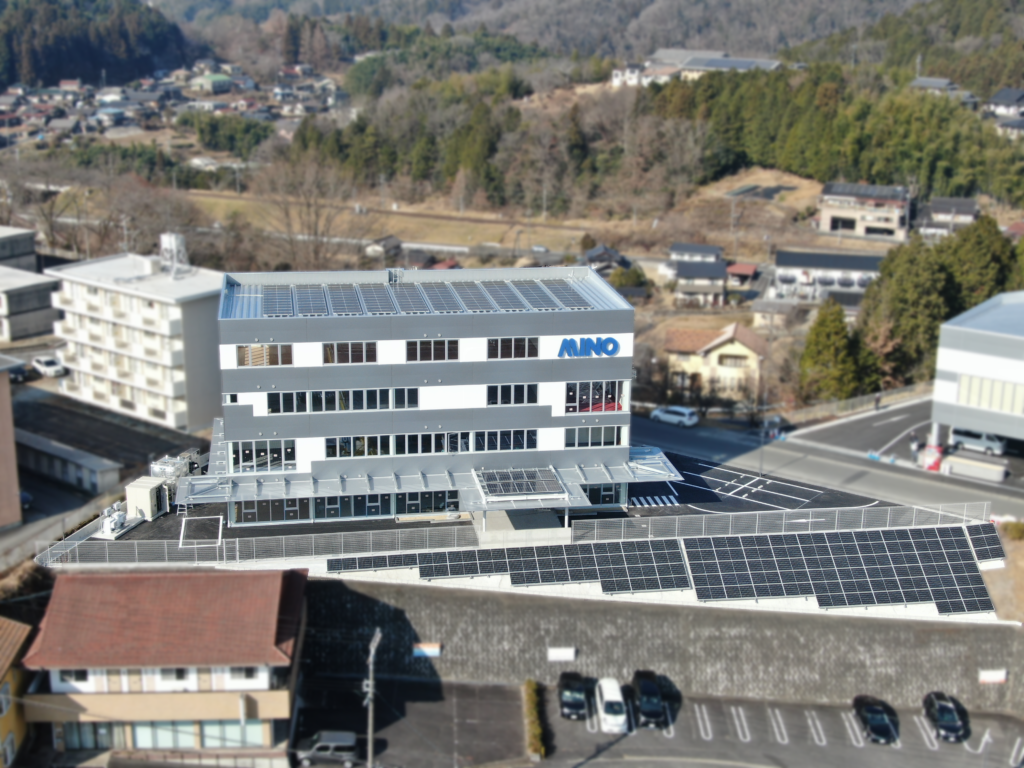Carbon neutral project activities
We have engaged in energy-saving, community clean-up, tree-planting, and other activities in accordance with the aim of becoming a leading global company capable of providing clients with security and safety through manufacturing for which the global environment and local communities are taken into account. Amid the recent growing interest in sustainability, we see the attainment of carbon neutrality as an element of the SDGs—in particular with respect to the addressing of global warming—as coming within the scope of our corporate social responsibilities. We will reduce our impact on the global environment through effective energy-saving activities based on the visualization of carbon dioxide emissions. By achieving carbon neutrality by 2040 while harnessing renewable sources of energy, we hope to bequeath this beautiful planet to future generations.

Drawing up a roadmap (fiscal year 2022)
To attain carbon neutrality by 2040, we will promote the following activities beginning in 2022:
- Ascertain and analyze the actual amount of energy consumed.
- Calculate power consumption rates by area and item and select targets for the reduction of carbon dioxide emissions (propose energy-saving items for each facility).
- Conduct a potential diagnosis for each facility.
- Draw up a roadmap for reducing carbon dioxide emissions.

Activity themes
Scope 1 and 2 compliance activities
1.Visualize carbon dioxide emissions from production lines and infrastructure facilities:
- Visualize carbon dioxide emissions and formulate an improvement plan.
- Implement and verify the effectiveness of improvement activities.
- Establish a method for measuring carbon dioxide emissions per product.
2.Visualize carbon dioxide emissions for the plant as a whole:
- Design a standard system for the visualization of carbon dioxide emissions and roll it out to all lines.
- Implement and verify the effectiveness of data-based energy-loss detection and improvement activities.
3.Visualize carbon dioxide emissions and promote energy-saving activities at our new head office plant:
- Introduce a system for the visualization of carbon dioxide emissions.
- Promote on-site improvement activities based on the use of a visualization system.
- Establish a system for measuring actual carbon dioxide emissions per product to facilitate carbon footprint compliance.
- Formulate a long-term plan for studying and realizing a futuristic casting plant through the introduction of advanced energy-saving technologies.
4.Implement energy-saving activities:
- Collect information on and formulate a plan for the implementation of energy-saving measures and energy-saving facilities.
- Engage in activities to reduce carbon dioxide emissions through the application of the above measures.
5.Study and introduce energy-saving measures based on the use of advanced technologies:
- Collect information on renewable energy technologies and formulate a medium- to long-term plan for its introduction.
- Optimize operations for controlling the number of compressors in use.
- Improve combustion efficiency by optimizing the air ratio in aluminum melting burners.
- Collect information on waste heat utilization technologies and introduce technologies for reusing waste heat.
- Investigate energy sources that are alternatives to fossil fuels and study next-generation aluminum melting furnaces.
Scope 3-1 compliance activities
①Ascertain carbon dioxide emissions through the use of emission intensities for Category 1.
②Investigate actual emissions for Category 1.
③Request the implementation of various measures, such as by introducing renewable energy and achieving higher raw material yield rates and higher recycling rates.
※Review activity plans according to progress.
ZEB specifications for our head office building
One-hundred-percent energy savings through the use of renewable energy sources
For our head office building, which is slated to be completed in March 2023, we are installing the latest energy-saving facilities and energy-saving designs with the aim of applying ZEB (an acronym for Net Zero Energy Building) specifications as the first step towards achieving carbon neutrality.

A building to which ZEB specifications have been applied is a building that aims to bring the annual net consumption of the primary energy source by the building to zero while still realizing a comfortable indoor environment. Since people carry out activities inside such a building, it would be impossible to reduce the consumption of energy to zero. However, the net consumption of energy can be reduced to zero by decreasing the amount of energy used through energy-saving measures and producing energy for use through on-site energy-generation measures.

